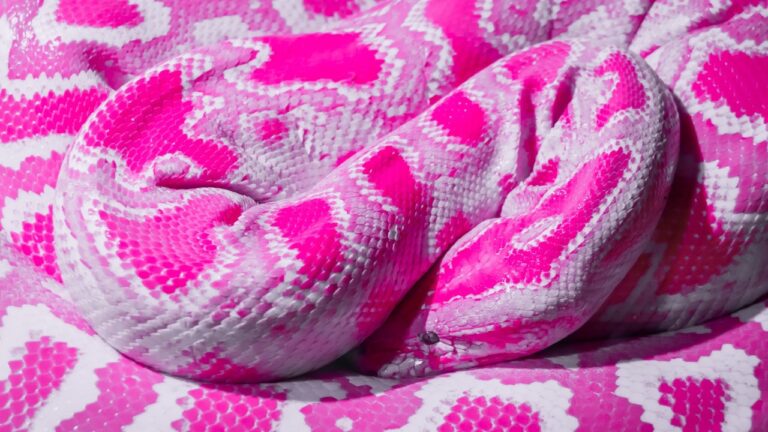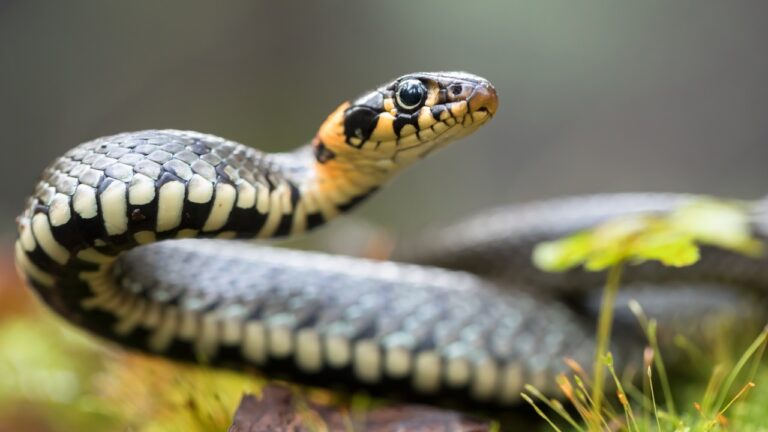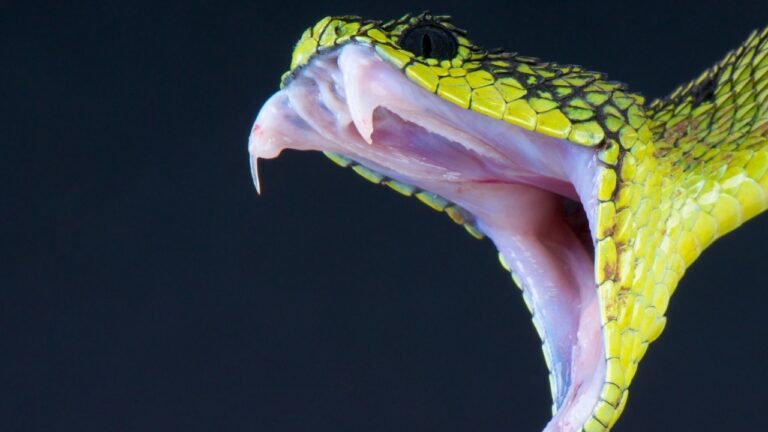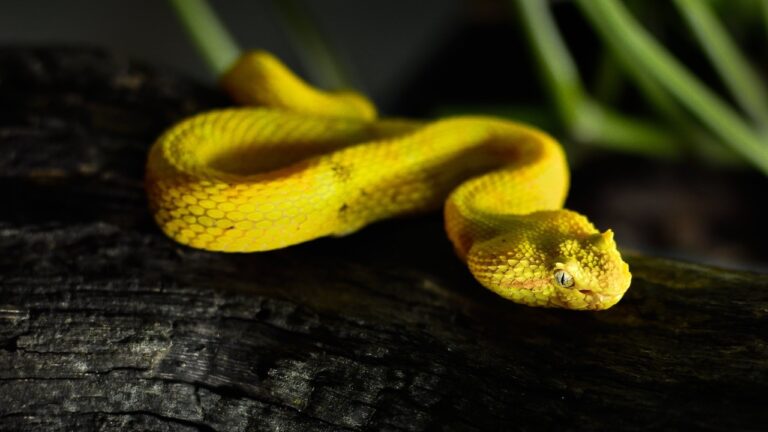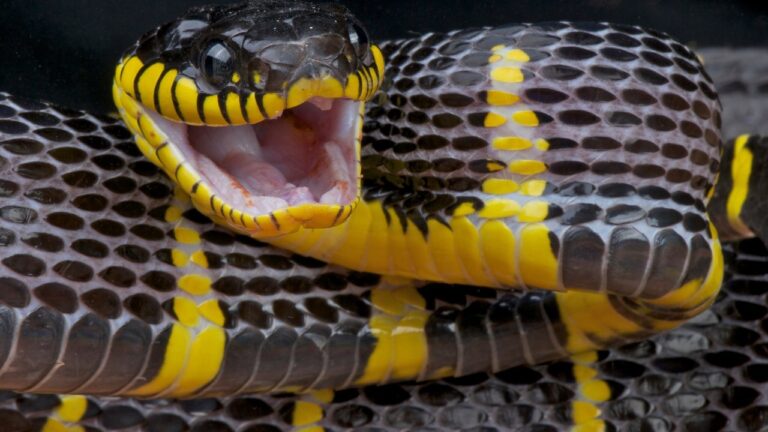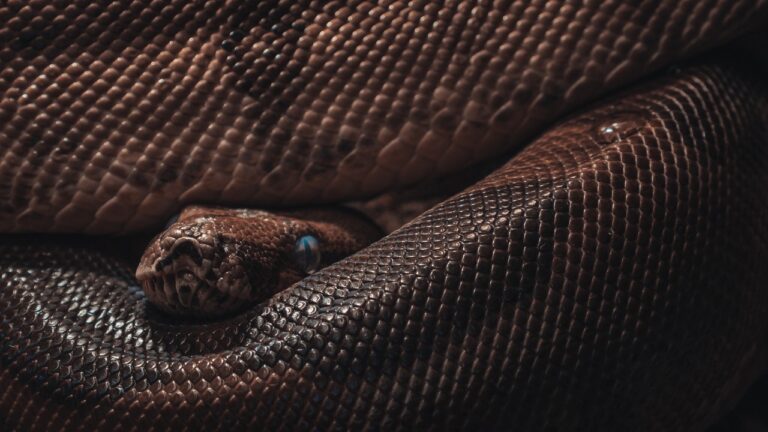Snake Feeding Plans: A Comprehensive Guide
Importance of Having a Feeding Plan for Your Snake
When it comes to keeping a snake as a pet, providing proper nutrition is crucial for their overall health and well-being. This is where having a well-thought-out feeding plan becomes essential. A feeding plan ensures that your snake is receiving the right type and amount of food, allowing it to thrive in captivity.
Understanding your snake’s feeding habits is the first step in creating an effective feeding plan. Different species of snakes have varying dietary requirements, and it is important to tailor their meals accordingly. Additionally, factors such as feeding frequency and prey size play significant roles in maintaining the optimal health of your slithering companion.
In this comprehensive guide, we will delve into the intricacies of snake feeding and provide you with the necessary knowledge to develop a feeding plan that caters to your snake’s specific needs. We will explore various aspects, from researching your snake’s species to troubleshooting common feeding issues. So, let’s embark on this enlightening journey and ensure that your snake’s appetite is satisfied!
Click here to check out our snake feeding guide.
Understanding Snake Feeding Habits
Different Types of Snakes and Their Diets
Feeding Frequency
Prey Size
Before diving into the specifics of creating a feeding plan, it is important to understand the unique feeding habits of snakes. Snakes are carnivorous creatures, and their diets primarily consist of other animals. However, the exact dietary requirements can vary depending on the species.
Some snakes, such as the ball python, prefer a diet of small mammals like mice and rats. Others, like the corn snake, may also consume birds and eggs. It is essential to research your snake’s species and ascertain their natural diet in the wild. This knowledge will help you replicate their dietary needs in captivity.
Feeding frequency is another crucial aspect to consider when developing a feeding plan. While snakes possess remarkable metabolisms, they do not require daily feedings. The frequency of feeding can vary depending on the snake’s age, size, and species. Generally, adult snakes are typically fed once every one to two weeks, while younger snakes may require more frequent meals. Refer to our snake feeding frequency guide for more detailed information.
The size of the prey is also a critical factor to consider. Snakes have the remarkable ability to consume prey items that are larger than their heads. However, offering prey that is too large can lead to digestive issues and potential regurgitation. Conversely, prey items that are too small may not provide adequate nutrition. Striking the right balance is key. Click here to access our snake feeding chart to help you determine the appropriate prey size for your snake’s species.
Now that we have a solid understanding of the basics of snake feeding habits, let’s move on to creating a comprehensive feeding plan that will ensure your snake’s health and happiness.
Creating a Snake Feeding Plan
Researching Your Snake’s Species
Determining the Right Prey Size
Establishing a Feeding Schedule
Monitoring Your Snake’s Health and Weight
To develop an effective feeding plan, it is crucial to research your snake’s species thoroughly. Each species has its own unique needs and preferences when it comes to food. By understanding the natural feeding behavior of your snake, you can provide a diet that closely mimics their wild diet, promoting overall health and satisfaction.
Determining the right prey size is equally important. As mentioned earlier, offering prey that is too large or too small can lead to complications. It is essential to strike a balance and provide prey items that are appropriate for your snake’s size and species. Our snake feeding chart can serve as a valuable resource in determining the ideal prey size.
Establishing a feeding schedule is another vital component of your snake’s feeding plan. Consistency is key, as snakes thrive on routine. By establishing regular feeding times, your snake will become accustomed to the schedule, making mealtime a stress-free experience for both you and your slithering friend. Check out our snake feeding schedules for additional guidance.
Monitoring your snake’s health and weight is an ongoing responsibility. Regularly assessing your snake’s body condition and weight can help you gauge the effectiveness of your feeding plan. If you notice any sudden changes in appetite or weight loss, it may be an indication of an underlying health issue that requires attention.
Now that we have covered the essential steps in creating a snake feeding plan, let’s explore different feeding methods and troubleshoot common issues that may arise during the feeding process.
Feeding Methods
Live Prey vs. Frozen/Thawed Prey
Hand Feeding vs. Using Tongs
Feeding in the Snake’s Enclosure vs. Separate Feeding Container
When it comes to feeding your snake, you have various methods to choose from. Two common options are offering live prey or frozen/thawed prey. Live prey can provide a more natural hunting experience for your snake, but it also comes with potential risks such as injury to your snake or the prey fighting back. On the other hand, frozen/thawed prey offers convenience and eliminates the risk associated with live prey consumption. It is essential to weigh the pros and cons and select the method that best suits your snake’s needs and your comfort level.
Another decision to make is whether to hand feed your snake or use tongs. Hand feeding can help establish a bond between you and your snake, but it also carries a small risk of accidental bites. Using tongs provides a safe distance between you and the snake, minimizing the chance of getting bitten. Whichever method you choose, always remember to handle your snake with care and respect.
Feeding your snake inside its enclosure or in a separate feeding container is another consideration. Feeding in the snake’s enclosure can mimic a natural hunting environment and minimize stress. However, it can also lead to substrate ingestion, which can be harmful if ingested in large quantities. Feeding in a separate container eliminates the risk of substrate ingestion but may cause stress for some snakes. It is important to monitor your snake’s behavior and preferences to determine the most suitable feeding method.
Now that we have explored different feeding methods, let’s address common issues that snake owners may encounter and provide troubleshooting tips to overcome them.
Common Issues and Troubleshooting
Refusal to Eat
Overeating
Regurgitation
Incorrect Prey Size
Shedding and Feeding
Feeding issues can arise even with the most well-planned feeding routine. It is important to be aware of common problems and know how to address them effectively.
One common issue is when your snake refuses to eat. This can be caused by various factors such as stress, improper temperature, or illness. If your snake consistently refuses meals for an extended period, it is important to consult a veterinarian to rule out any underlying health concerns.
Overeating can also be a problem for some snakes, especially those with voracious appetites. It is important to monitor your snake’s weight and adjust the feeding schedule and prey size accordingly. Obesity in snakes can lead to a range of health issues, so it is essential to maintain a healthy body condition.
Regurgitation is another concern that snake owners may encounter. It can occur due to factors such as improper prey size, inadequate digestion time, or stress. If your snake regurgitates its meal, it is crucial to give it ample time to recover before attempting to feed again. Identifying and addressing the underlying cause is key to preventing future regurgitation episodes.
Ensuring the correct prey size is essential for your snake’s overall well-being. Offering prey that is too large can lead to digestion problems, while prey that is too small may not provide adequate nutrition. Regularly assess your snake’s body condition and adjust the prey size accordingly.
Lastly, shedding and feeding are closely intertwined. Snakes often experience a decrease in appetite leading up to shedding. This is a natural behavior, as shedding requires energy and resources. It is important not to force-feed your snake during this period. Wait until after the shedding process is complete before offering food again.
Now that we have covered common feeding issues and troubleshooting tips, let’s move on to discussing safety precautions to ensure the well-being of both you and your snake during feeding.
Safety Precautions
Handling Prey Items Safely
Proper Enclosure Setup During Feeding
Supervision and Avoiding Disturbances During Feeding
When it comes to feeding your snake, safety should always be a top priority. Here are some essential safety precautions to keep in mind:
Handling prey items safely is crucial to prevent injury. Prey items, especially live ones, can bite or scratch, potentially causing harm to you or your snake. Always use appropriate tools such as tongs or specialized feeding devices to handle prey items safely.
Proper enclosure setup during feeding is important to minimize stress and prevent accidents. Ensure that the enclosure is secure and free from any potential hazards that could harm your snake or interfere with the feeding process. Removing unnecessary objects and providing a calm environment can contribute to a stress-free feeding experience.
During feeding, it is essential to supervise the process and avoid disturbances. Snakes can be sensitive to external stimuli, and any disruptions can cause them to become defensive or abandon their meal. Minimize noise and movement in the vicinity of the feeding area to ensure a peaceful environment for your snake.
By following these safety precautions, you can create a secure and stress-free feeding environment for your snake.
Conclusion
In conclusion, having a well-planned feeding plan is crucial for the health and happiness of your snake. By understanding your snake’s feeding habits, determining the right prey size, establishing a feeding schedule, and monitoring their health and weight, you can provide the optimal nutrition they need to thrive.
Consider different feeding methods such as live prey or frozen/thawed prey, hand feeding or using tongs, and feeding in the enclosure or a separate container. Troubleshoot common feeding issues like refusal to eat, overeating, regurgitation, incorrect prey size, and shedding-related feeding behavior.
Always prioritize safety by handling prey items carefully, ensuring proper enclosure setup during feeding, and providing supervision and a disturbance-free environment.
Remember, a well-fed snake is a healthy snake, and a healthy snake is a happy companion. So, dive into the world of snake feeding with confidence, armed with the knowledge and tools to create a feeding plan that will satisfy your slithering friend’s appetite for years to come.
Understanding Snake Feeding Habits
When it comes to feeding your snake, understanding their unique feeding habits is crucial for their health and well-being. Different types of snakes have varying dietary needs, feeding frequencies, and prey sizes. By familiarizing yourself with these factors, you can create a feeding plan that suits your snake’s specific requirements. Let’s explore the key aspects of snake feeding habits in more detail.
Different Types of Snakes and Their Diets
Snakes are a diverse group of reptiles, and their diets can vary greatly depending on their species. While some snakes are strictly carnivorous, feeding exclusively on other animals, others may have more specialized diets. For instance, some snakes are known to consume small mammals, birds, amphibians, fish, or even other snakes. It is important to research your snake’s species to understand their natural diet and ensure you are providing appropriate food options.
Feeding Frequency
Snake feeding frequency is another crucial aspect to consider. While some snakes may require regular meals, others have adapted to survive on infrequent feedings. Factors such as age, size, metabolism, and species influence how often you should offer food to your snake. Feeding frequency can range from weekly to monthly. It is important to strike a balance between providing enough nourishment and avoiding overfeeding, which can lead to obesity and other health issues.
Prey Size
Determining the right prey size is essential for the well-being of your snake. The size of the prey should be appropriate for the size and age of your snake. Offering prey that is too small may not provide the necessary nutrients, while prey that is too large can present a choking hazard or cause digestive problems. It is recommended to offer prey items that are approximately the same width as your snake’s body at its widest point. Remember, snakes can stretch their jaws to accommodate larger prey items, but it is important not to push their limits.
Understanding these fundamental aspects of snake feeding habits sets a solid foundation for creating a comprehensive feeding plan. By considering the species-specific diet, appropriate feeding frequency, and prey size, you can ensure your snake receives the nutrition it needs to thrive. In the next section, we will delve into the process of creating a personalized snake feeding plan, tailored to your snake’s unique requirements.
Continue reading: Creating a Snake Feeding Plan to learn more about researching your snake’s species, determining the right prey size, establishing a feeding schedule, and monitoring your snake’s health and weight.
Creating a Snake Feeding Plan
When it comes to caring for your snake, having a well-thought-out feeding plan is crucial. By understanding your snake’s specific needs and tailoring their diet accordingly, you can ensure their overall health and well-being. In this section, we will explore the key steps involved in creating a snake feeding plan.
Researching Your Snake’s Species
To begin, it is essential to conduct thorough research on your snake’s species. Different types of snakes have unique dietary requirements, and it is important to understand what they need to thrive. By delving into reliable sources such as reputable snake care books or expert websites, you can gain valuable insights into your snake’s natural feeding habits.
As you dive into your research, take note of the specific prey items that your snake’s species would typically consume in the wild. This information will serve as a foundation for determining the appropriate prey size and type for your pet snake. It’s also worth noting that some snakes are more specialized in their diets, while others are more adaptable. Understanding these nuances will help you make informed decisions regarding your snake’s nutritional needs.
Determining the Right Prey Size
Once you have a good understanding of your snake’s species and their natural feeding habits, it’s time to determine the right prey size. Snakes come in various sizes, and their prey items should be proportionate to their body size and age. Feeding your snake prey items that are too large or too small can lead to digestion problems or insufficient nutrition.
As a general rule of thumb, the diameter of the prey should be about the same as the widest part of your snake’s body. This ensures that the prey is neither too challenging for your snake to swallow nor too small to provide adequate sustenance. Keep in mind that as your snake grows, you will need to adjust the prey size accordingly to meet their evolving nutritional needs.
Establishing a Feeding Schedule
Establishing a consistent feeding schedule is another crucial aspect of a snake feeding plan. Snakes thrive on routine, and having a set schedule helps regulate their metabolism and digestion. The frequency of feeding will depend on your snake’s species, size, and age.
For example, smaller snakes may require more frequent meals, while larger snakes may have a longer interval between feedings. To determine the ideal feeding schedule for your snake, consult reputable sources or seek advice from experienced snake owners or herpetologists. It’s important to strike a balance between providing adequate nutrition and allowing enough time for proper digestion.
Monitoring Your Snake’s Health and Weight
As you implement your feeding plan, it is vital to closely monitor your snake’s health and weight. Regularly assessing your snake’s overall condition will help you identify any potential issues or deviations from their normal behavior. Keep an eye out for signs of weight loss or gain, changes in appetite, or unusual lethargy.
Maintaining a record of your snake’s feeding routine, including the date, prey size, and any observations, can be beneficial. This log will help you track their progress and identify any patterns or irregularities. By staying attentive to your snake’s well-being, you can make necessary adjustments to their feeding plan if required.
Remember, a well-designed snake feeding plan is not set in stone. As you gain more experience and learn more about your snake’s individual needs, you may need to make modifications along the way. With proper research, careful consideration of prey size, establishment of a consistent feeding schedule, and vigilant monitoring, you can create a feeding plan that promotes your snake’s optimal health and happiness.
Continue reading our comprehensive snake feeding guide for more insights into snake feeding habits, troubleshooting common issues, and important safety precautions to ensure the well-being of your scaly companion.
Feeding Methods
When it comes to feeding your snake, there are several methods to choose from. Each method has its own advantages and considerations, so it’s important to understand the options available to you. In this section, we will explore the different feeding methods commonly used by snake owners: live prey vs. frozen/thawed prey, hand feeding vs. using tongs, and feeding in the snake’s enclosure vs. a separate feeding container.
Live Prey vs. Frozen/Thawed Prey
One of the first decisions you’ll need to make when planning your snake’s meals is whether to feed it live prey or frozen/thawed prey. Live prey refers to small animals, such as mice or rats, that are still alive when offered to the snake. On the other hand, frozen/thawed prey refers to rodents that have been humanely euthanized and then frozen before being thawed for feeding.
Live prey can be more stimulating for snakes, as it mimics their natural hunting instincts. The movement and scent of live prey can trigger a snake’s predatory behavior, making the feeding experience more engaging. However, there are risks associated with live prey, such as the possibility of the snake getting injured during the hunt or the prey fighting back and potentially harming the snake.
Frozen/thawed prey offers a safer alternative. By feeding your snake pre-killed prey, you eliminate the risk of injury from live prey. Additionally, frozen/thawed prey is often more convenient for snake owners, as it can be easily stored and thawed when needed. It’s important to note that some snakes may be reluctant to accept frozen/thawed prey initially, but with patience and persistence, most can be successfully transitioned to this feeding method.
Hand Feeding vs. Using Tongs
The next consideration in your snake feeding method is whether to hand feed or use tongs. Hand feeding involves directly offering the prey item to the snake, allowing it to strike and capture the food with its own movements. This method can help foster a stronger bond between you and your snake, as well as provide an opportunity for behavioral enrichment.
Using tongs, on the other hand, involves holding the prey item with a pair of feeding tongs or forceps and offering it to the snake. This method allows for more control and reduces the risk of accidental bites or strikes. It is especially useful when feeding larger snakes or species that have a more aggressive feeding response.
Ultimately, the choice between hand feeding and using tongs depends on your preferences, your snake’s behavior, and the specific needs of your snake species. Some snakes may prefer one method over the other, so it’s essential to observe and understand your snake’s feeding behavior to determine which approach works best.
Feeding in the Snake’s Enclosure vs. Separate Feeding Container
Another decision to make when it comes to feeding your snake is whether to feed it in its enclosure or in a separate feeding container. Feeding in the snake’s enclosure allows for a more natural feeding experience, as it closely resembles how snakes feed in the wild. It also minimizes stress by reducing the need for handling and transferring the snake to a different location.
However, feeding in the snake’s enclosure can have its drawbacks. It may increase the risk of substrate ingestion, especially if the snake strikes and captures the prey on the ground. Additionally, some snakes may become defensive or protective of their feeding area, leading to potential aggression or territorial behavior.
Using a separate feeding container provides a controlled environment for feeding. It allows you to monitor the snake’s feeding behavior more closely and reduces the chances of substrate ingestion. Feeding in a separate container also helps establish a conditioned response, where the snake learns to associate the container with feeding time.
Ultimately, the decision between feeding in the snake’s enclosure or a separate feeding container depends on your snake’s behavior, the enclosure setup, and your personal preferences. It’s important to consider the specific needs of your snake species and make adjustments as necessary.
In the next section, we will discuss common issues and troubleshooting tips to help you address any challenges that may arise during the feeding process. Stay tuned for valuable insights on how to ensure a successful and healthy feeding routine for your snake.
Internal Links:
Common Issues and Troubleshooting
While having a well-planned snake feeding routine is essential for the health and well-being of your scaly friend, it’s not uncommon to encounter a few hiccups along the way. In this section, we will address some common issues that snake owners may face and provide troubleshooting tips to help you navigate these challenges.
Refusal to Eat
It can be concerning when your snake refuses to eat, especially if it’s a sudden behavior change. There can be several reasons behind this behavior, ranging from stress to illness. If your snake is refusing to eat, it’s crucial to rule out any underlying health issues. Check the temperature and humidity levels in their enclosure, as these factors can greatly influence their appetite. Additionally, consider any recent changes in their environment or handling routine that could be causing stress.
If your snake’s refusal to eat persists, it may be helpful to consult a reptile veterinarian or an experienced snake keeper for further guidance. They can provide valuable insights and suggest potential solutions tailored to your snake’s specific needs.
Overeating
Overeating is another common issue that can arise when feeding snakes. It’s important to remember that snakes have a slower metabolism compared to mammals, and they don’t require frequent meals. Feeding your snake too often or providing prey items that are too large can lead to overeating.
Overeating can have detrimental effects on your snake’s health, including obesity and digestive issues. To prevent overfeeding, it’s essential to follow the recommended feeding guidelines for your snake’s species. Research their natural feeding habits and adjust their feeding schedule accordingly. Maintaining a healthy weight for your snake is key to their overall well-being.
Regurgitation
Regurgitation occurs when a snake brings up its recently consumed meal. This can be a distressing experience for both the snake and the owner. There are several reasons why a snake may regurgitate, including handling or disturbing them too soon after a meal, feeding prey items that are too large, or underlying health issues.
If your snake regurgitates, it’s important to assess the possible causes and make the necessary adjustments. Ensure that you are allowing your snake enough time to digest their meal before handling them. Pay attention to the size of the prey items you offer, making sure they are appropriate for your snake’s size and species. If regurgitation persists or is accompanied by other concerning symptoms, consult a reptile veterinarian for a thorough evaluation.
Incorrect Prey Size
Choosing the correct prey size for your snake is crucial for their health and digestion. Offering prey items that are too small may not provide sufficient nutrients, while prey items that are too large can lead to choking or regurgitation. It’s important to match the size of the prey to the size of your snake.
Researching your snake’s species and understanding their natural feeding habits will guide you in selecting the appropriate prey size. Young snakes will require smaller meals, while adult snakes may need larger prey items. Refer to reputable sources, such as snake feeding charts or guides, to ensure you are providing the right prey size for your snake’s specific needs.
Shedding and Feeding
Snakes often experience a period of shedding, where they shed their old skin to allow for growth. During this time, their appetite may decrease, and they may refuse to eat. This is a natural behavior, and it’s important to respect their temporary loss of appetite during the shedding process.
Avoid handling or disturbing your snake while they are shedding, as this can cause stress and potentially interfere with the shedding process. Once your snake has completed its shed, their appetite should return to normal, and you can resume their regular feeding routine.
Remember, snakes are unique creatures with individual feeding preferences and behaviors. By understanding and addressing common feeding issues, you can ensure a healthy and fulfilling feeding routine for your slithery companion.
Continue reading to learn more about important safety precautions to consider during snake feedings.
Safety Precautions
When it comes to feeding your snake, it’s crucial to prioritize safety. Handling prey items safely, setting up the enclosure properly during feeding, and ensuring supervision and minimal disturbances are all essential for the well-being of your slithery friend.
Handling Prey Items Safely
Snakes rely on their natural hunting instincts, which means they may strike at their prey with lightning speed. To prevent accidental bites, it’s important to handle prey items with care. Using tongs or specialized feeding tools is recommended to maintain a safe distance between your hand and the snake’s feeding response. This not only protects you but also minimizes stress for your snake during mealtime.
Proper Enclosure Setup During Feeding
Creating the right environment for feeding is crucial to ensure your snake’s safety. Consider using a separate feeding container, which can help establish a clear distinction between the feeding area and the snake’s regular habitat. This method minimizes the chances of your snake associating your hand with food, reducing the risk of accidental bites. Remember to clean and disinfect the feeding container thoroughly after each meal to maintain a hygienic environment for your snake.
Supervision and Avoiding Disturbances During Feeding
Supervision is key when it comes to snake feeding. While it may be tempting to leave your snake alone during mealtime, it’s important to monitor the feeding process to ensure everything goes smoothly. Watch for any signs of distress or regurgitation and be ready to intervene if necessary. Avoid any disturbances or sudden movements that could startle the snake while it’s eating, as this can lead to stress or defensive behavior.
By following these safety precautions, you can ensure a smooth and secure feeding experience for both you and your snake. Remember, a well-informed and cautious approach is the key to a healthy and happy snake.
For more information on snake feeding, check out our comprehensive snake feeding guide. It covers a wide range of topics, including snake feeding habits, feeding schedules, and common feeding problems. Be sure to explore our website for valuable resources, including a handy snake feeding chart to help you plan your snake’s meals effectively.
Conclusion
In conclusion, establishing a proper feeding plan for your snake is crucial for its overall health and well-being. By understanding your snake’s feeding habits and following a structured approach, you can ensure that your scaly friend receives the nutrition it needs to thrive.
Throughout this comprehensive guide, we have explored various aspects of snake feeding, including the different types of snakes and their diets, feeding frequency, and prey size considerations. Armed with this knowledge, you can create a personalized snake feeding plan that suits your reptile’s specific needs.
Researching your snake’s species is a fundamental step in developing an effective feeding plan. Each snake has unique dietary requirements, and understanding these requirements will help you determine the right prey size and establish an appropriate feeding schedule. Regularly monitoring your snake’s health and weight is essential to ensure that it is receiving the correct amount of food.
When it comes to feeding methods, you have the choice between live prey and frozen/thawed prey. Each method has its advantages and considerations, and it ultimately comes down to personal preference and the needs of your snake. Similarly, you can choose between hand feeding and using tongs to offer the prey to your snake. Both methods have their benefits, and you can experiment to find what works best for you and your snake. Additionally, deciding whether to feed your snake in its enclosure or a separate feeding container depends on your snake’s feeding behavior and the setup of its enclosure.
While feeding your snake, you may encounter some common issues and challenges such as refusal to eat, overeating, regurgitation, and incorrect prey size. It is important to be aware of these potential problems and address them promptly to ensure your snake’s well-being. Furthermore, understanding the relationship between shedding and feeding is crucial, as the two processes are closely linked.
To ensure the safety of both you and your snake, it is important to follow proper safety precautions during feeding. Handling prey items safely, setting up the enclosure correctly during feeding, and avoiding disturbances are all essential to prevent accidents or stress for your snake.
In conclusion, developing a comprehensive snake feeding plan is a vital aspect of responsible snake ownership. By understanding your snake’s unique needs, following appropriate feeding methods, and being aware of potential issues, you can provide your snake with a healthy and fulfilling feeding experience.
Remember, if you ever need further guidance or information, you can always refer to our comprehensive snake feeding guide and snake feeding tips on our website. Happy feeding and happy snakes!
Disclaimer: The information provided in this article is for educational purposes only and should not replace professional veterinary advice. Always consult with a qualified reptile veterinarian for personalized guidance regarding your snake’s feeding routine.


